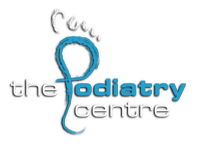How do I know if I have Osteoarthritis or Rhuematoid Arthritis in the Feet ?
A common question I receive from patients who present with joint pain is ‘Do you think I have arthritis?’ Whilst on some occasions the observation proves to be an accurate diagnosis, the use of the umbrella term ‘arthritis’ to describe joint related problems does not factor in the inherently different natures of the two most common forms of arthritis; osteoarthritic and rheumatoid.
This blog will focus on bringing to light some major differences between the two forms of arthritis and should in no way be taken as an exhaustive list. As with any other foot or lower limb related concern, specialist advice should be sought to ensure proper diagnosis and treatment is applied to the case in question.
Osteoarthritis
Is the more common form of arthritis of the two and is caused by the gradual wear and tear of the joints which leads to irregular joint space narrowing and irritation of the joint lines.
- Age of Onset
- Osteroarthritis usually occurs later in life (after a lifetime of joint use), however incidences of early onset can be found in people who have overly active lifestyles or who have suffered bone and joint injuries.
- Symptoms
- Sufferers will generally experience tender joints however there may be little to no swelling in the immediate area. Morning stiffness in the joints is a common symptom which reduces after an hour or so of physical activity. The stiffness may return at the end of the day or after rest.
- Commonly affected joints
- The condition starts unilaterally (on one side) but may develop on the unaffected end.
- In the upper limb it commonly affects the finger joints (closest to the end of the fingers) and thumbs. Osteroarthritis in the neck has also been seen in patients who have been in vehicle accidents.
- In the lower limbs, it is commonly seen in large weight bearing joints such as knees, hips and ankle joints. The big toe joint can also be affected.
- Treatments
- Treatments may include but are not limited to, anti-inflammatory medication, cortisone injections, physical therapy and exercise as well as arthroscopies and joint replacement procedures.
Rheumatoid Arthritis
A less common form of arthritis, only making up about 10% of the total arthritis cases, it is an autoimmune disease whereby the bodies immune system begins attacking and destroying its own joints.
- Age of Onset
- May occur at any point of a persons life. Children particularly struggle with he condition as it can hamper proper development as the child ages.
- Symptoms
- Sufferers will generally experience tender and stiff joints with associated swelling at the affected sites. Morning stiffness in the joints is a common symptom however unlike with osteoarthritis, the stiffness will persist and not ease without the aid of physical therapies or medications.
- Sufferers can often exhibit body wide symptoms such as fever, malaise and tiredness as a result of the build-up of rheumatic factors and their total effect on body systems.
- Commonly affected joints
- The condition commonly affects limbs on both sides.
- In the upper limb it commonly affects the middle joints of the fingers as well as the joints attaching the fingers to the other bones in the hand.
- In the lower limbs, it is commonly seen in the midtarsal (middle foot) joints.
- The affected joints can often exhibit clear abnormalities in joint appearance due to the pronounced nature of the abnormalities.
- Treatments
- Rheumatoid arthritis doesn’t have a cure. Most treatments available focus on reducing the swelling, stiffness and progressive discomfort associated with the condition. Medications such as anti-inflammatory drugs are used to alleviate pain and inflammation however its common for stronger, steroid based medications to be given. These can often have adverse effects with long term use. It is fairly common to use disease-modifying antirheumatic drugs to control system wide symptoms that may occur. Physical therapies can assist in enabling the patient to maintain a level of range of motion and independence however improvements often are not as god as those with osteoarthritis.
Dr Anel Kapur (Podiatrist)
